Review forms of energy and electricity terms with this science vocabulary worksheet pack.
What Are the Different Forms of Energy?
Are your students learning about the different forms of energy this year? Whether this is your first year teaching this science concept or perhaps you need a quick refresher, we’ve put together a quick guide to use with your students when defining the different forms of energy.
Mechanical Energy – This is a special type of energy that has to do with motion, both moving things and things that can move.
Electrical Energy – This special kind of energy comes from tiny particles called electrons. These electrons move through things like wires and circuits to make things work. When we plug in our toys, turn on lights or charge our devices, we’re using electrical energy to make them run.
Light Energy – This is a type of energy that comes from the sun and other sources of light, like light bulbs. It’s a special kind of energy that allows us to see things.
Thermal Energy – This is a type of energy that makes things warm or hot. It’s the energy that comes from the movement of tiny particles called atoms and molecules inside an object. When these particles move faster, they make the object hotter; when they move slower, they make it cooler.
Sound Energy – This is a type of energy that we hear with our ears. It’s the energy produced when something makes a noise. When you talk, sing or play music, you’re creating sound energy.
Vocabulary Worksheets for Your Science Class!
We all know that there are so many new vocabulary terms that students need to learn in science. Keeping students engaged with the vocabulary and multiple opportunities to use the new terms is an important step in long-term retention. If your students are learning about the different forms of energy, they are probably gaining experience with vocabulary words such as mechanical energy, electrical energy and light energy. Additionally, as they explore electrical energy and electricity, many vocabulary words are essential to know, such as closed circuit, battery, insulator, etc. Get started on your Energy and Electricity unit plans with an introduction to 15 content-related vocabulary terms.
This worksheet pack integrates science and vocabulary concepts. This energy and electricity vocabulary worksheet pack consists of the following learning material:
- Energy and Electricity Vocabulary List
- Energy and Electricity Vocabulary Flipbook
- Energy and Electricity Vocabulary Flashcards
- Energy and Electricity Vocabulary Worksheet
An answer key is included with your download to make grading fast and easy!
Tips for Differentiation + Scaffolding
In addition to independent student work time, use this worksheet as an activity for:
- Science centers
- Lesson warm-up
- Lesson wrap-up
- Fast finishers
- Homework assignment
- Whole-class review (via smartboard)
If there are students who need an additional challenge, encourage them to create a comic or infographic using a set number of vocabulary terms.
Have students who need additional support work with fewer vocabulary terms at a time. Students can work with a partner or in a 1-on-1 setting to complete the interactive notebook foldable and vocabulary activity.
🖨️ Easily Download & Print
Use the dropdown icon on the Download button to choose between the PDF or editable Google Slides version of this resource.
Since the vocabulary activity includes an answer sheet, we recommend you print one copy of the entire file. Then, make photocopies of the blank worksheet for students to complete.
This resource was created by Kaylyn Chupp, a Teach Starter Collaborator.
Don’t stop there! We’ve got more activities to shorten your lesson planning time:
[resource:4689144] [resource:4651901] [resource:4861397]
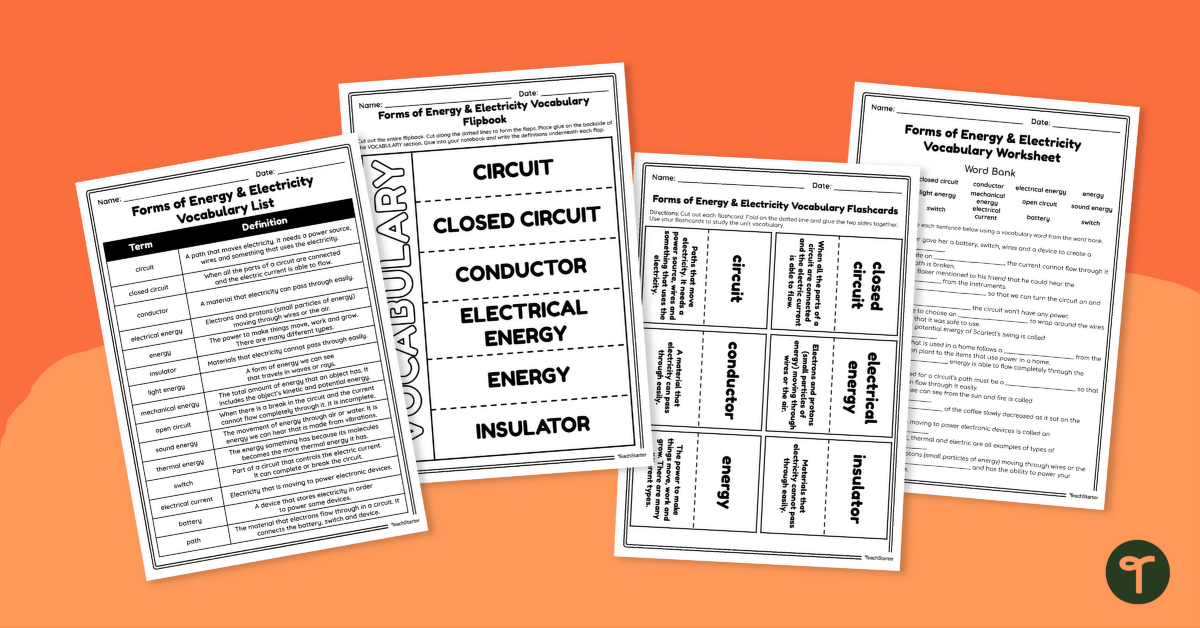

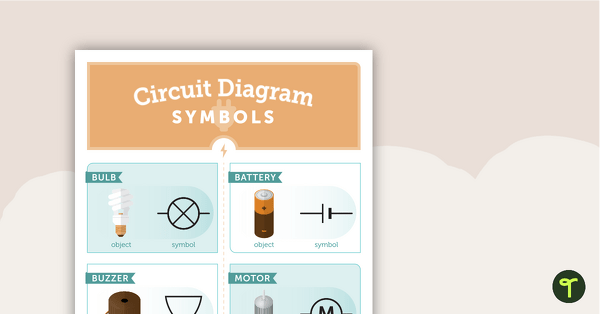
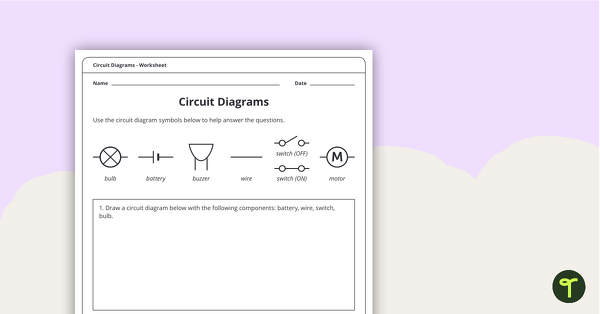
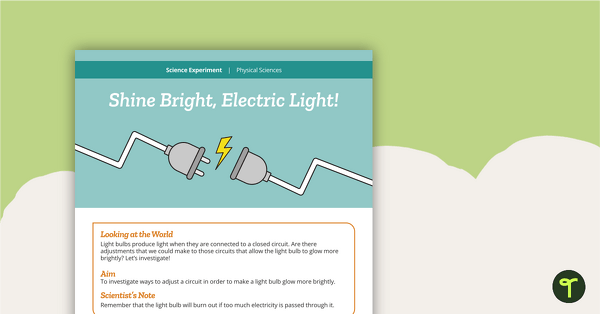
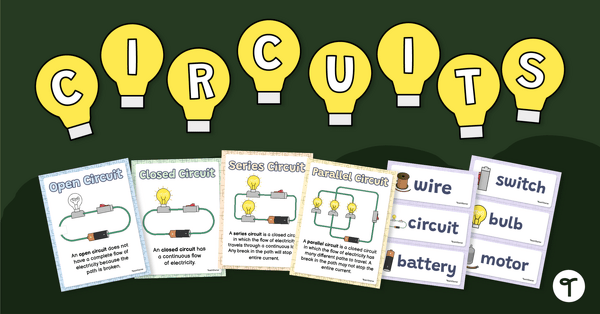
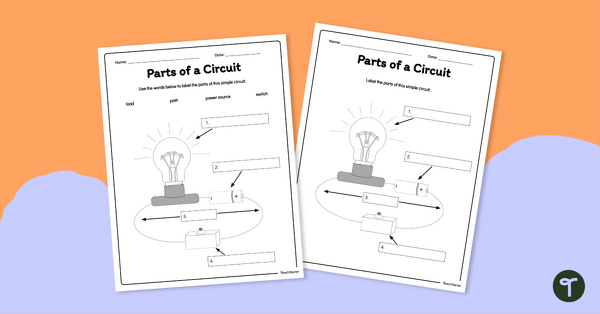
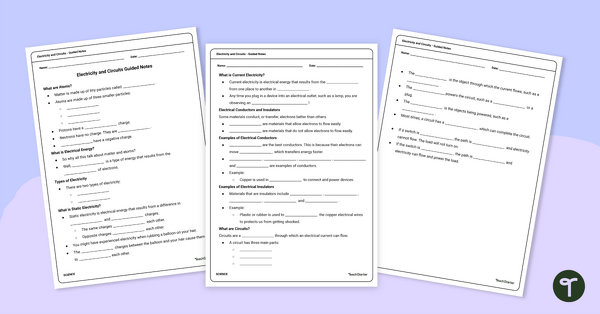
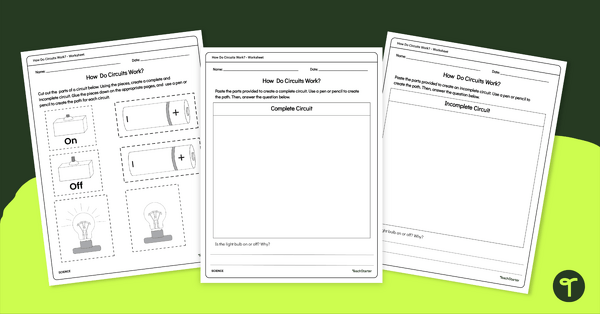
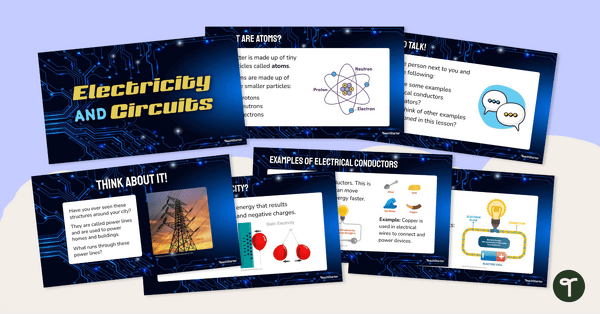

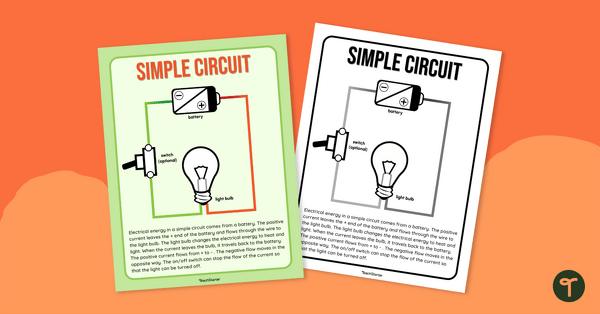
0 Comments
Write a review to help other teachers and parents like yourself. If you'd like to request a change to this resource, or report an error, select the corresponding tab above.